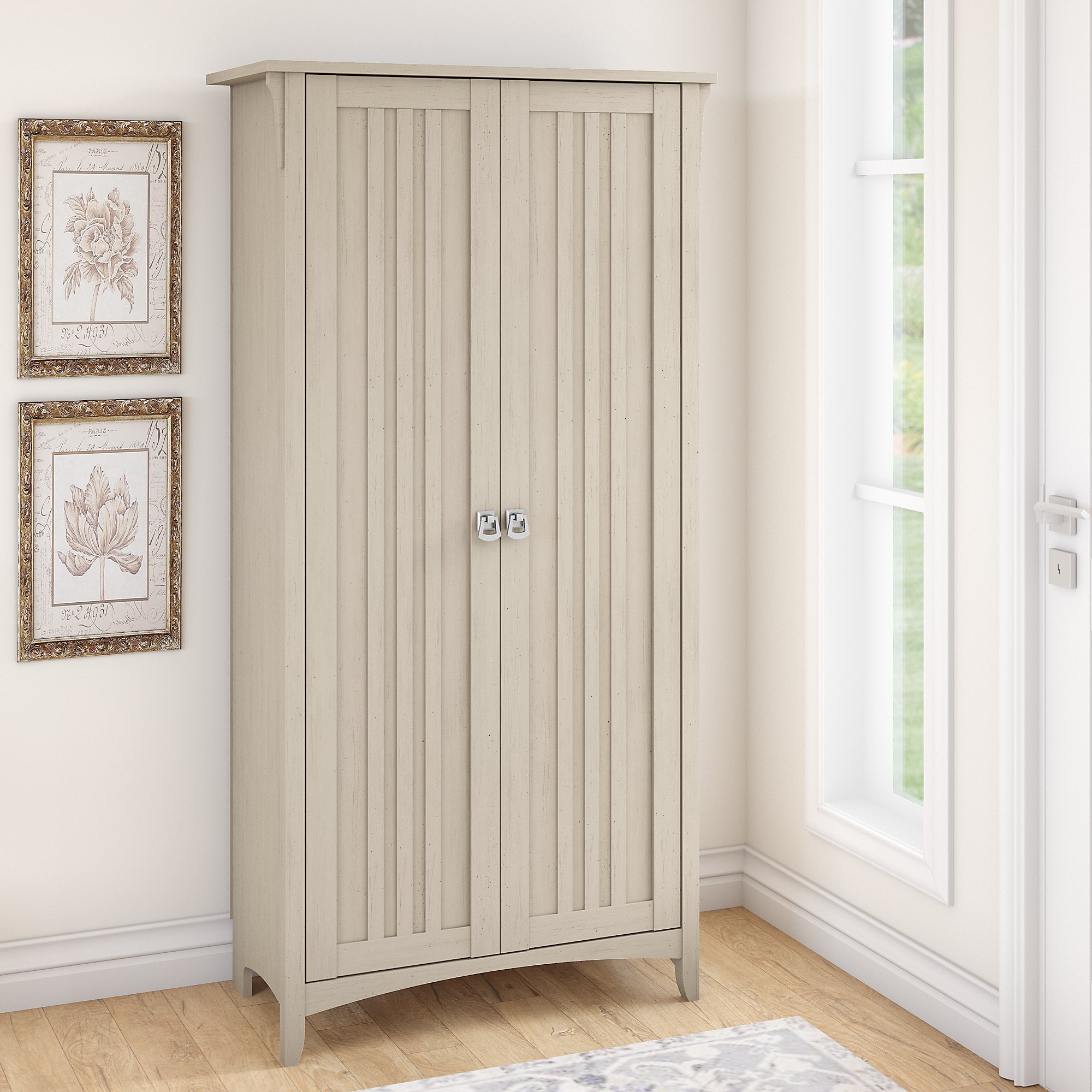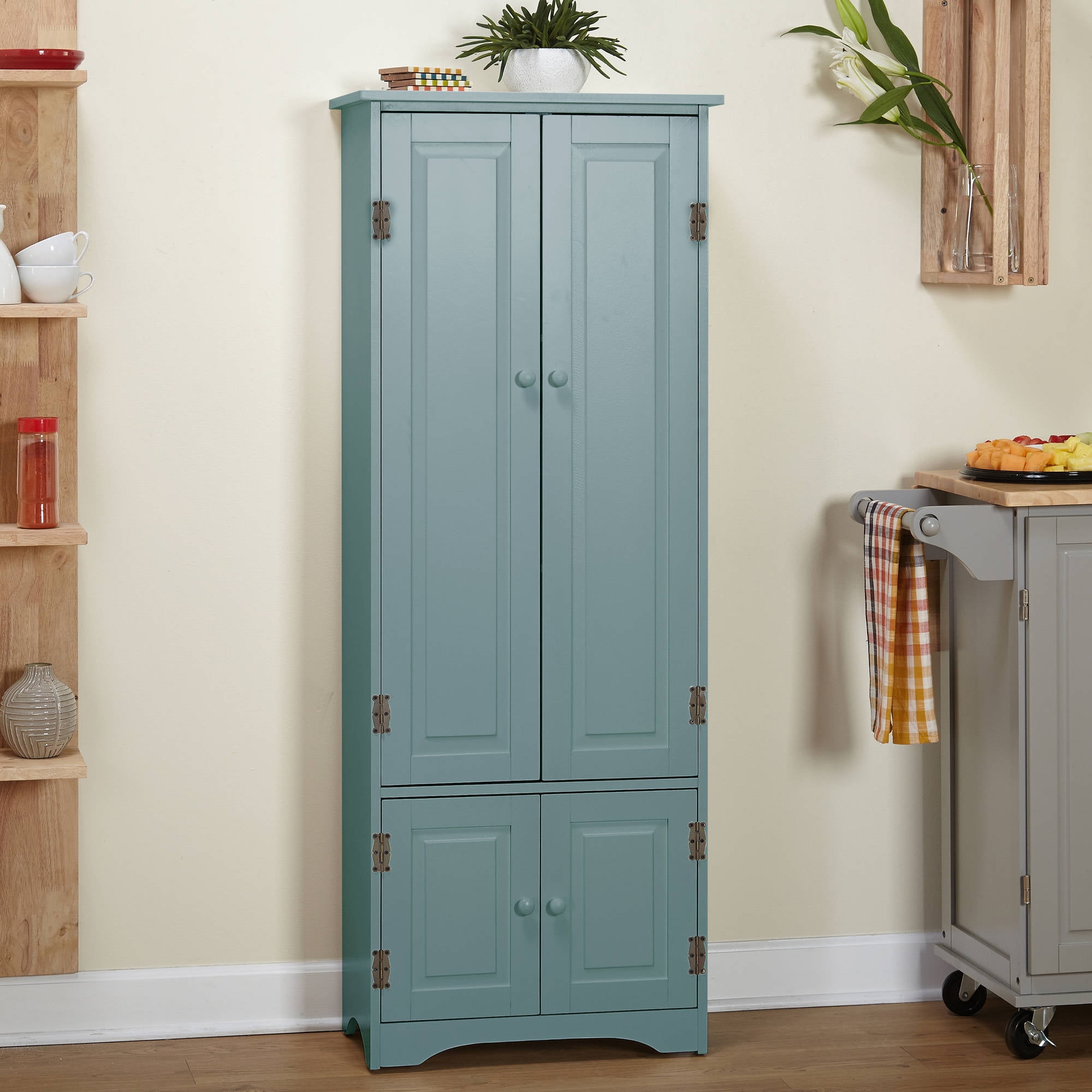Types and Styles of Tall Kitchen Cabinets with Doors: Tall Cabinet With Doors Kitchen

The seemingly innocuous tall kitchen cabinet, a vertical behemoth of storage, is far more politically charged than one might initially assume. Its design, material, and placement within the kitchen space reflect not only aesthetic choices but also a complex interplay of functionality, budget, and social status. The choices available are a microcosm of broader societal trends and economic realities.
Cabinet Styles and Materials, Tall cabinet with doors kitchen
Tall kitchen cabinets are available in a bewildering array of styles, each carrying its own ideological baggage. Shaker cabinets, with their simple, clean lines and flat-panel doors, represent a minimalist aesthetic often associated with progressive values and a rejection of ostentation. In contrast, traditional cabinets, frequently adorned with ornate carvings and raised panels, evoke a sense of heritage and established wealth, potentially reflecting conservative sensibilities. Modern cabinets, often characterized by sleek, handleless designs and high-gloss finishes, represent a forward-looking approach, sometimes associated with technological advancement and urban lifestyles. The choice of material further complicates the picture. Solid wood, such as oak or cherry, speaks to durability and craftsmanship, often carrying a higher price tag and suggesting a commitment to quality and sustainability. However, the use of engineered wood, while more affordable and often more environmentally efficient in its production, can be viewed as a compromise, reflecting a pragmatic approach to resource management. Finishes, from matte to high-gloss, also convey different messages, influencing the overall perception of the kitchen’s status.
Functionality of Door Styles
The style of cabinet door significantly impacts both the functionality and the aesthetic of the kitchen. Slab doors, characterized by their flat, uninterrupted surface, project a sense of modernity and simplicity. Their clean lines facilitate easy cleaning and a streamlined appearance, but they lack the visual interest of other styles. Raised panel doors, with their raised central panel, offer a more traditional and often more ornate look, adding texture and visual depth to the kitchen. However, the recessed grooves can be more difficult to clean. Recessed panel doors, featuring a recessed central panel, provide a slightly more subtle variation on the raised panel design, balancing visual interest with practicality. The choice of door style, therefore, is not merely a matter of taste but a decision that influences the overall feel and usability of the space. For example, a minimalist kitchen might benefit from the clean lines of slab doors, while a more traditional setting might better accommodate the visual richness of raised panel doors.
Kitchen Layouts Featuring Tall Cabinets
The strategic placement of tall cabinets dramatically affects the functionality and flow of the kitchen. Three distinct layouts exemplify this.
Tall cabinet with doors kitchen – Layout 1: Linear Tall Cabinet Arrangement
- Description: Tall cabinets are placed along one wall, forming a continuous vertical storage solution. This layout is common in smaller kitchens where space optimization is crucial.
- Pros: Maximizes vertical space, creates a streamlined look, efficient use of limited space.
- Cons: Can feel cramped if not properly spaced, limited counter space, may require careful planning to avoid obstructing pathways.
Layout 2: Island with Flanking Tall Cabinets
- Description: Tall cabinets flank a central kitchen island, creating a visually balanced and functional layout. This arrangement is suitable for larger kitchens.
- Pros: Offers ample storage, creates a focal point in the kitchen, enhances both storage and counter space.
- Cons: Requires a larger kitchen space, can be more expensive to implement, may require additional lighting considerations.
Layout 3: Corner Tall Cabinets with Open Shelving
- Description: Tall cabinets are incorporated into a corner unit, often combined with open shelving to balance the visual weight and add visual interest. This is a versatile layout.
- Pros: Utilizes awkward corner space, combines closed and open storage for aesthetic and functional balance, offers a modern, less cluttered look.
- Cons: Corner cabinets can be less accessible, open shelving requires careful organization, careful consideration of lighting is essential.
| Layout | Space Requirement | Storage Capacity | Aesthetic |
|---|---|---|---|
| Linear | Small to Medium | High for its footprint | Streamlined, Modern |
| Island with Flanking Cabinets | Large | Very High | Balanced, Traditional or Modern |
| Corner with Open Shelving | Medium to Large | Moderate to High | Modern, Versatile |
Maximizing Storage and Organization in Tall Kitchen Cabinets

The seemingly endless vertical space offered by tall kitchen cabinets presents a significant opportunity, yet often remains frustratingly underutilized. Effective storage solutions are not merely about cramming in more items; they’re about creating a system that ensures accessibility, minimizes waste, and ultimately, improves workflow efficiency. Failing to optimize these spaces equates to a significant loss of valuable kitchen real estate and contributes to a chaotic culinary environment.
Efficient storage solutions for tall kitchen cabinets hinge on strategic implementation of various organizational tools. The inherent challenge lies in reaching the top shelves without a step stool, and subsequently retrieving items stored at the back. This necessitates a carefully considered design that prioritizes both vertical and horizontal accessibility.
Shelf Dividers and Pull-Out Drawers
Shelf dividers, typically made from wire, wood, or plastic, are inexpensive and highly effective in preventing stacks of plates or bowls from toppling. Wire dividers offer flexibility and can be adjusted to accommodate varying item sizes. Wooden dividers provide a more robust solution, particularly for heavier items. Plastic dividers offer a budget-friendly alternative, though they may be less durable. Consider dividers with adjustable heights for maximum versatility. Dimensions should be chosen to fit the specific shelf width, with heights that appropriately separate stacks of plates, bowls, or other items. Pull-out drawers, often incorporating internal dividers, offer unparalleled accessibility to items stored at the back of deep cabinets. These drawers, usually made from wood or metal, eliminate the need for extensive searching and reaching. Customizable drawer inserts allow for tailoring the space to fit specific items, maximizing space utilization. Typical dimensions range from 12 to 24 inches deep, with widths dependent on the cabinet size.
Organizing Items Within Tall Cabinets
Effective organization requires a systematic approach. Grouping similar items together streamlines retrieval. Heavier items should be stored on lower shelves for safety and ease of access. Frequently used items should occupy the most accessible shelves, while less frequently used items can be placed higher. Items prone to breakage should be carefully cushioned to prevent damage.
The following table Artikels recommended storage solutions for various kitchen items:
| Item Type | Recommended Storage Solution | Rationale |
|---|---|---|
| Dishes | Stackable shelves with dividers | Prevents shifting and breakage. |
| Pots and Pans | Pull-out drawers with dividers or vertical organizers | Maximizes space and provides easy access. |
| Pantry Items (Canned Goods) | Adjustable shelves and turntables | Optimizes space and allows easy rotation of stock. |
| Baking Supplies | Clear containers and labeled shelves | Ensures visibility and quick identification. |
| Cookbooks | Pull-out shelves or a dedicated cookbook stand | Allows for easy browsing and selection. |
Optimal Organization for a Tall Pantry Cabinet
Imagine a tall pantry cabinet approximately 72 inches high and 18 inches wide. The lower third (24 inches) houses heavier items like canned goods on adjustable shelves, with a turntable for easier access to items at the back. The middle third (24 inches) is dedicated to baking supplies and frequently used pantry staples, stored in clear containers for easy visibility. This section may incorporate pull-out drawers for smaller items. The top third (24 inches) is reserved for less frequently used items or seasonal items, such as holiday decorations or extra linens. This arrangement prioritizes accessibility, with frequently used items readily available and heavier items stored lower for safety and stability. The use of clear containers and labels throughout the cabinet ensures easy identification of contents, further enhancing efficiency. The strategic placement of pull-out drawers and turntables mitigates the challenges of reaching the back and upper shelves. This design ensures that even the highest shelf remains easily accessible and usable.
Tall Kitchen Cabinets

Tall kitchen cabinets, often overlooked as mere storage solutions, are in reality powerful architectural elements capable of dramatically shaping a kitchen’s aesthetic and functionality. Their strategic integration is crucial for achieving a cohesive and visually appealing space, maximizing both storage and design impact. Ignoring this potential is a missed opportunity to elevate the entire kitchen experience.
Cabinet Integration and Style Cohesion
The seamless integration of tall cabinets hinges on careful consideration of the overall kitchen design. A rustic farmhouse kitchen, for instance, might benefit from tall cabinets crafted from reclaimed wood, painted in a warm, creamy white or muted sage green. The hardware would likely be substantial, perhaps black iron or brushed nickel pulls, echoing the style’s inherent robustness. In contrast, a minimalist contemporary kitchen demands a different approach. Sleek, handleless cabinets in a high-gloss white or a sophisticated charcoal grey, perhaps with integrated lighting, would create a clean, uncluttered aesthetic. The hardware, if present, would be minimal and discreet, emphasizing the clean lines of the design. A modern kitchen might feature tall cabinets in a bold color like deep navy or emerald green, juxtaposed with lighter countertops and backsplashes for visual contrast. The hardware could be sleek, brushed brass or polished chrome, adding a touch of luxury.
The Impact of Lighting on Tall Cabinets
Lighting is not merely functional; it’s a crucial design element that dramatically impacts the perception of tall cabinets. Poorly lit cabinets appear dark, cramped, and uninviting, while well-lit cabinets enhance the sense of spaciousness and highlight their contents. Integrated LED strip lighting within the cabinet crown molding, softly illuminating the interior, is a highly effective solution. This avoids harsh overhead lighting and allows for easy visibility of stored items. Under-cabinet lighting, while primarily designed for work surfaces, can also subtly illuminate the base of the tall cabinets, creating a visually appealing glow. Recessed lighting above the cabinets can provide ambient illumination, enhancing the overall kitchen atmosphere and drawing attention to the cabinets’ architectural presence. Avoid solely relying on ambient lighting; it’s crucial to incorporate task lighting for specific cabinet sections.
